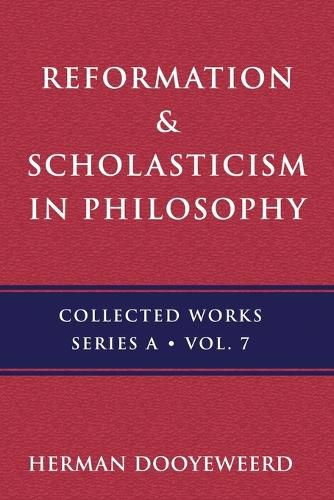Readings Newsletter
Become a Readings Member to make your shopping experience even easier.
Sign in or sign up for free!
You’re not far away from qualifying for FREE standard shipping within Australia
You’ve qualified for FREE standard shipping within Australia
The cart is loading…






This title is printed to order. This book may have been self-published. If so, we cannot guarantee the quality of the content. In the main most books will have gone through the editing process however some may not. We therefore suggest that you be aware of this before ordering this book. If in doubt check either the author or publisher’s details as we are unable to accept any returns unless they are faulty. Please contact us if you have any questions.
The present volume of Reformation & Scholasticism completes the second trilogy of Dooyeweerd's writings with a specific focus upon his philosophy of nature. Unique to this work is the development of his new theory which he called enkaptic interlacements. This theory was an attempt to show how various types of entities exhibit inter-relational connections when combined into new forms that express an enkaptic unity without eclipsing the internal sovereignty of the several entities. The relationship between atom and molecule and that between the non-living components of the cell body and their enkaptic binding in the living organism serve as an introduction to Dooyeweerd's anthropology, in which he distinguishes between four enkaptically bounded sub-structures, namely the physico-chemical substructure, the biotic sub-structure, the sensory sub-structure and the qualifying, though in itself unqualified, act-structure. The problem of creation and the genesis of humankind surfaced briefly before the final, - alas unfinished - chapter analyzes the place of humankind in the cosmos, characterized as a central anthropological problem. Although Dooyeweerd's involvement in finalizing his Encyclopedia of the Science of Law prevented him from completing his work, it remains a valuable contribution to a much needed reformation of anthropology.
$9.00 standard shipping within Australia
FREE standard shipping within Australia for orders over $100.00
Express & International shipping calculated at checkout
This title is printed to order. This book may have been self-published. If so, we cannot guarantee the quality of the content. In the main most books will have gone through the editing process however some may not. We therefore suggest that you be aware of this before ordering this book. If in doubt check either the author or publisher’s details as we are unable to accept any returns unless they are faulty. Please contact us if you have any questions.
The present volume of Reformation & Scholasticism completes the second trilogy of Dooyeweerd's writings with a specific focus upon his philosophy of nature. Unique to this work is the development of his new theory which he called enkaptic interlacements. This theory was an attempt to show how various types of entities exhibit inter-relational connections when combined into new forms that express an enkaptic unity without eclipsing the internal sovereignty of the several entities. The relationship between atom and molecule and that between the non-living components of the cell body and their enkaptic binding in the living organism serve as an introduction to Dooyeweerd's anthropology, in which he distinguishes between four enkaptically bounded sub-structures, namely the physico-chemical substructure, the biotic sub-structure, the sensory sub-structure and the qualifying, though in itself unqualified, act-structure. The problem of creation and the genesis of humankind surfaced briefly before the final, - alas unfinished - chapter analyzes the place of humankind in the cosmos, characterized as a central anthropological problem. Although Dooyeweerd's involvement in finalizing his Encyclopedia of the Science of Law prevented him from completing his work, it remains a valuable contribution to a much needed reformation of anthropology.